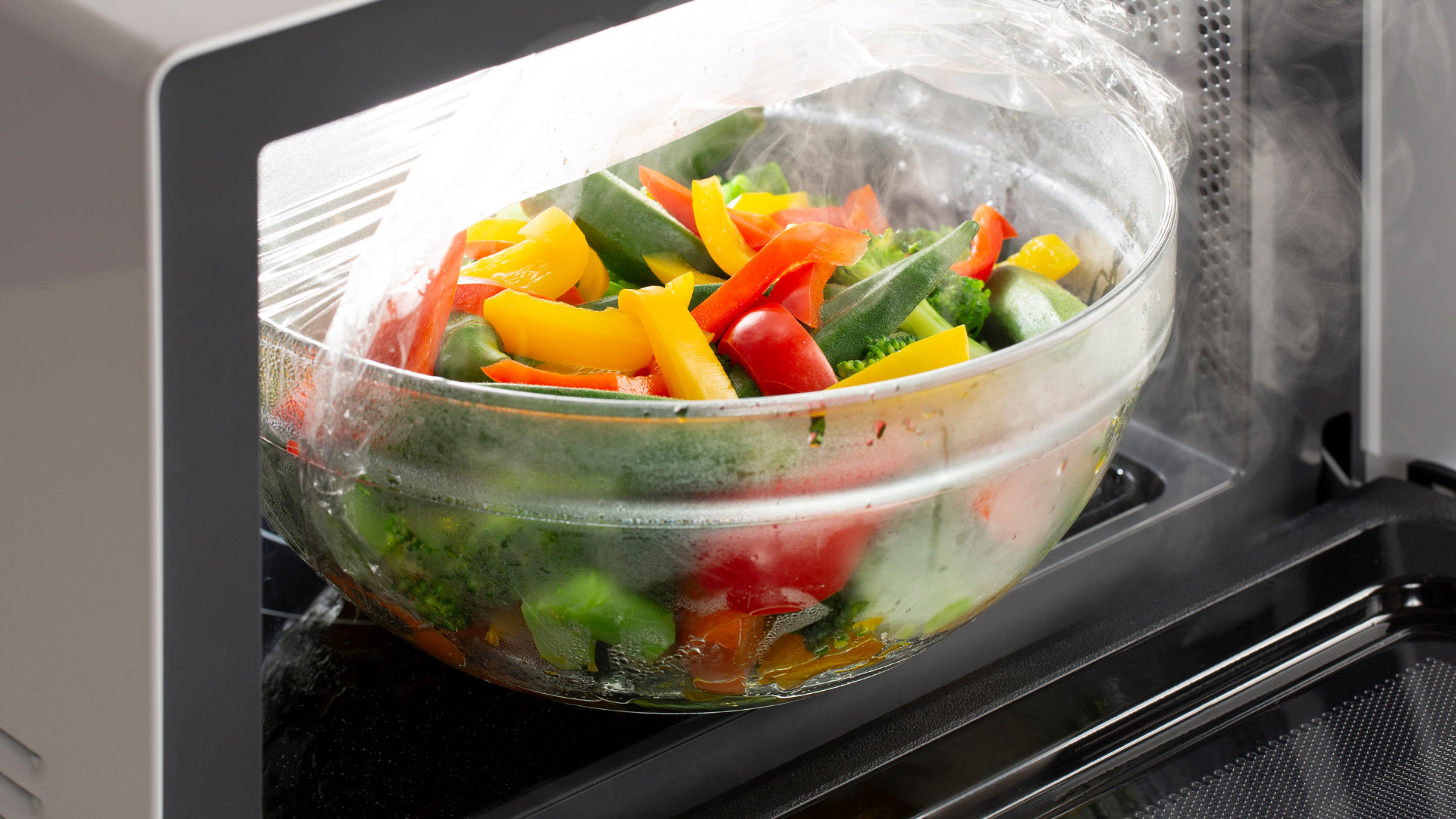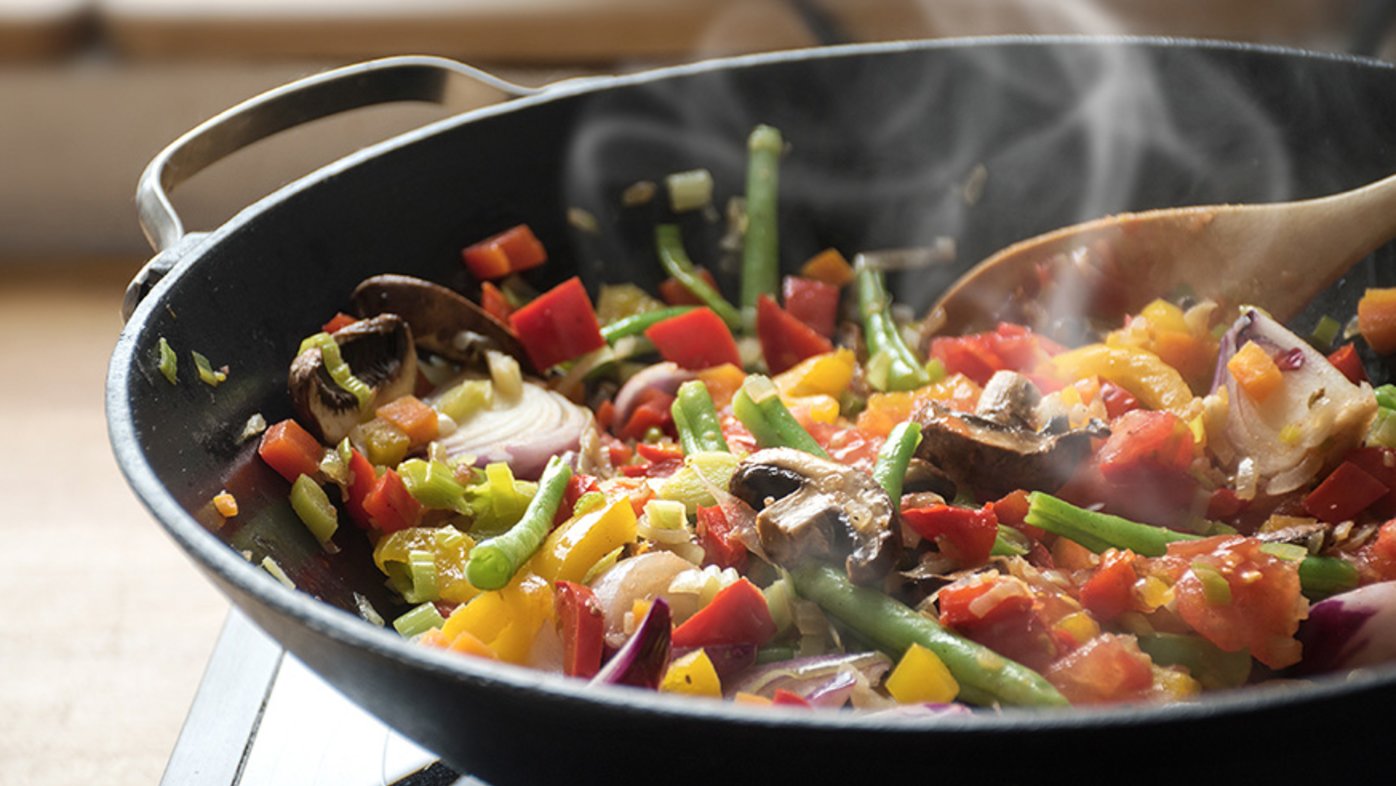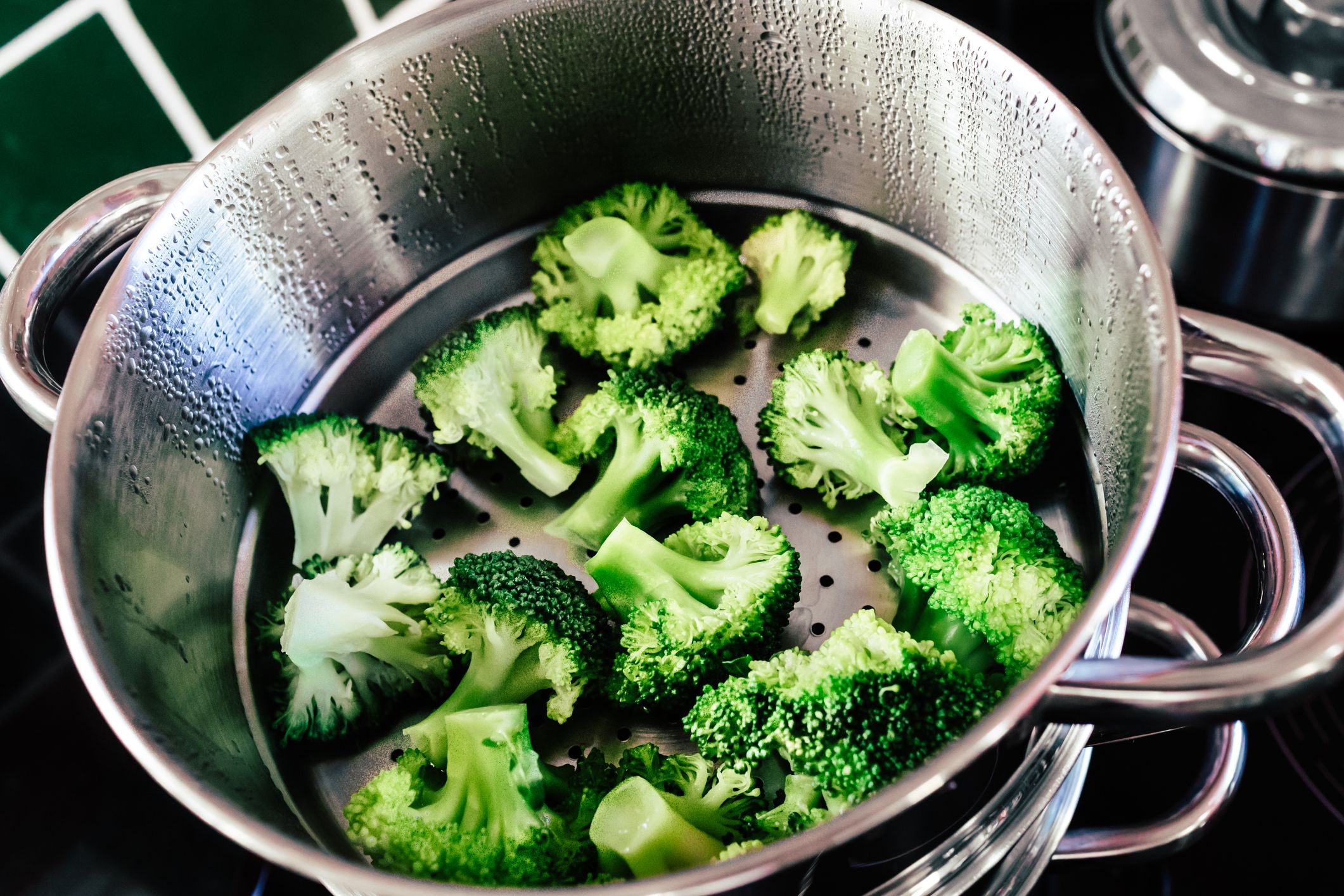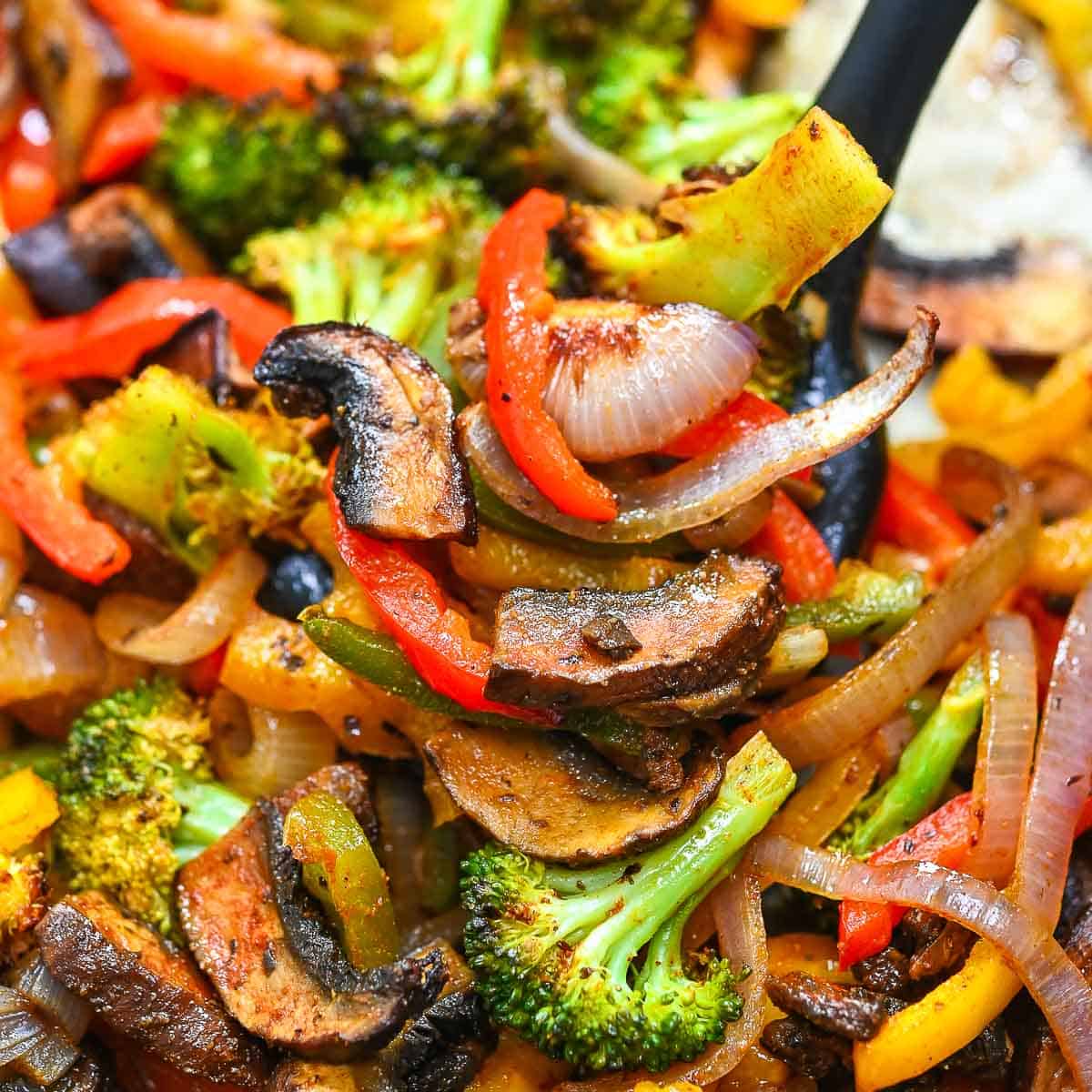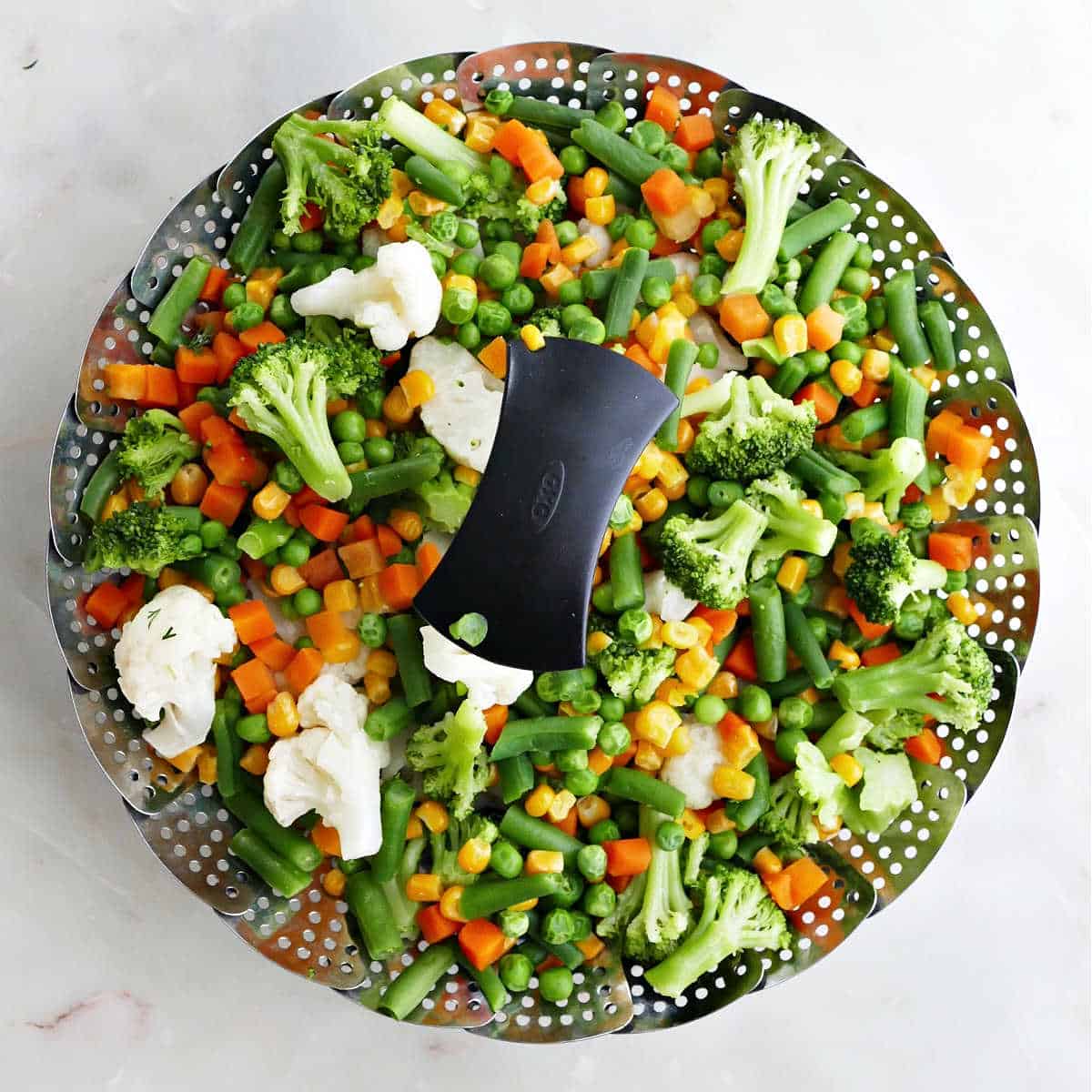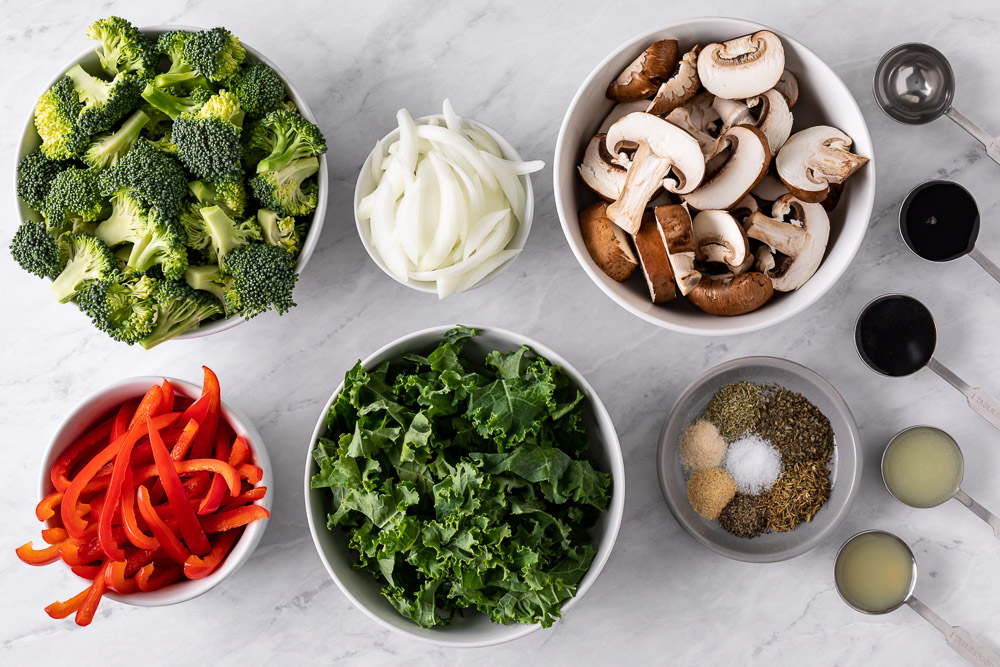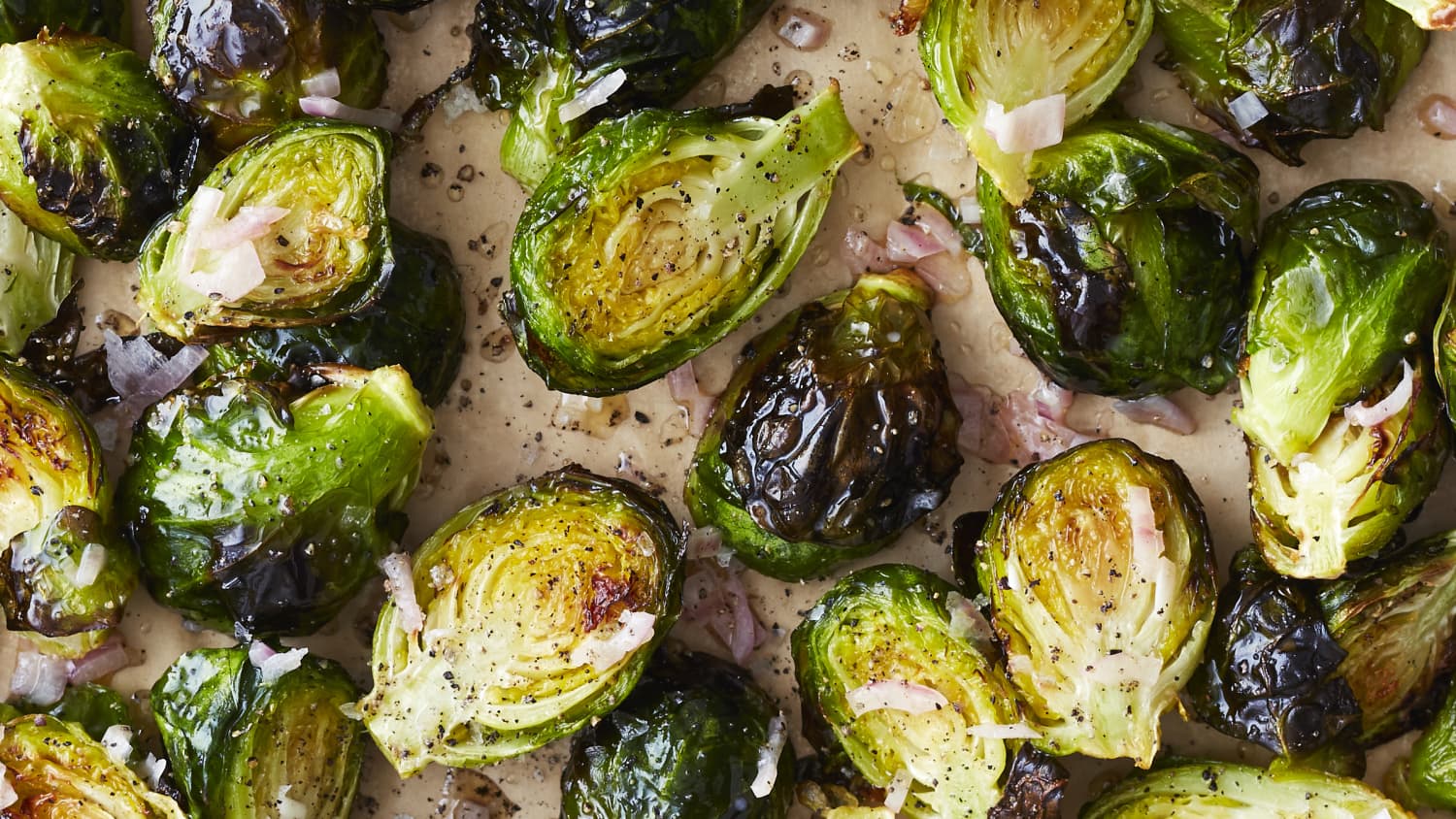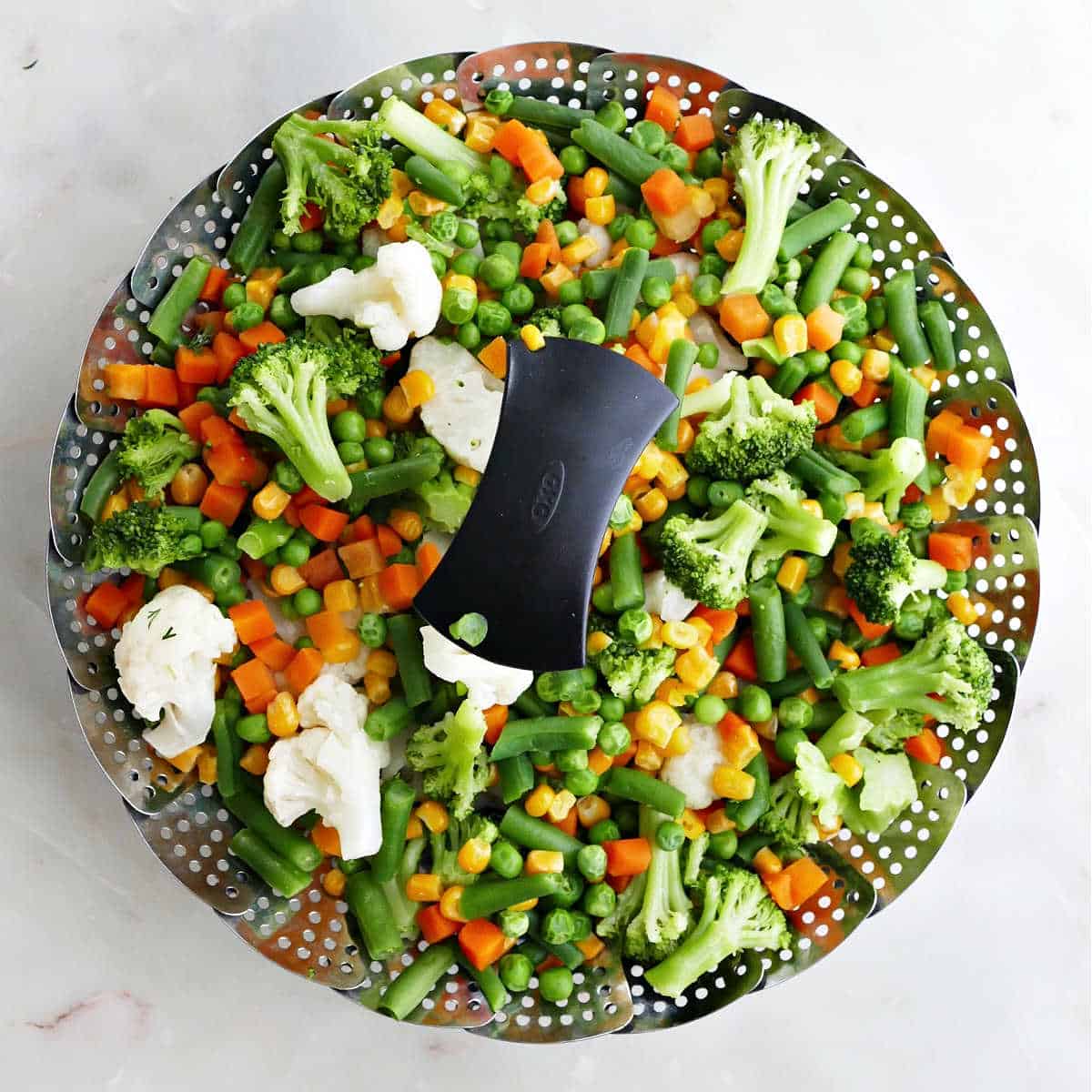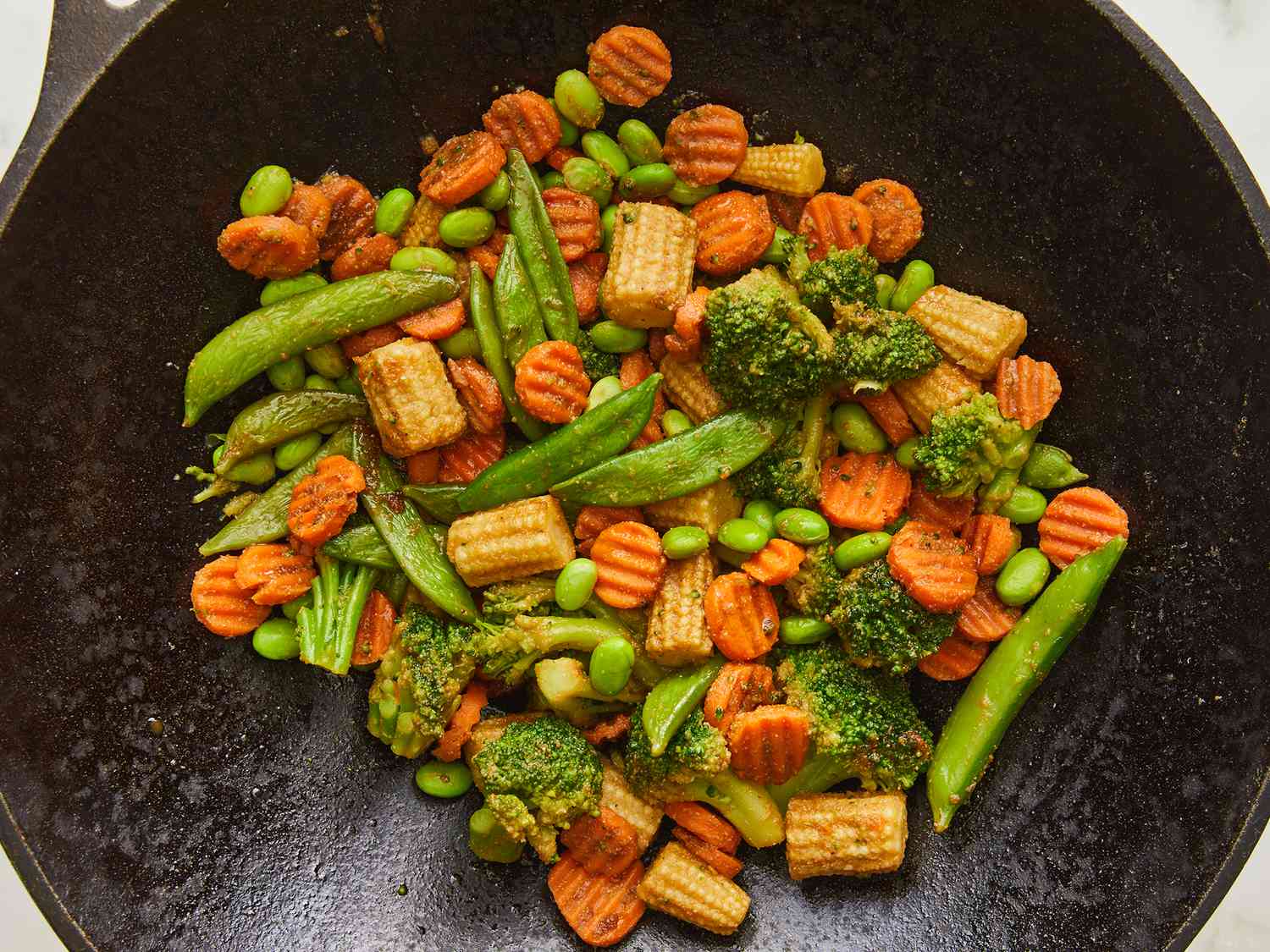Home>Gardening News and Trends>Latest News>How To Cook Frozen Vegetables In Air Fryer
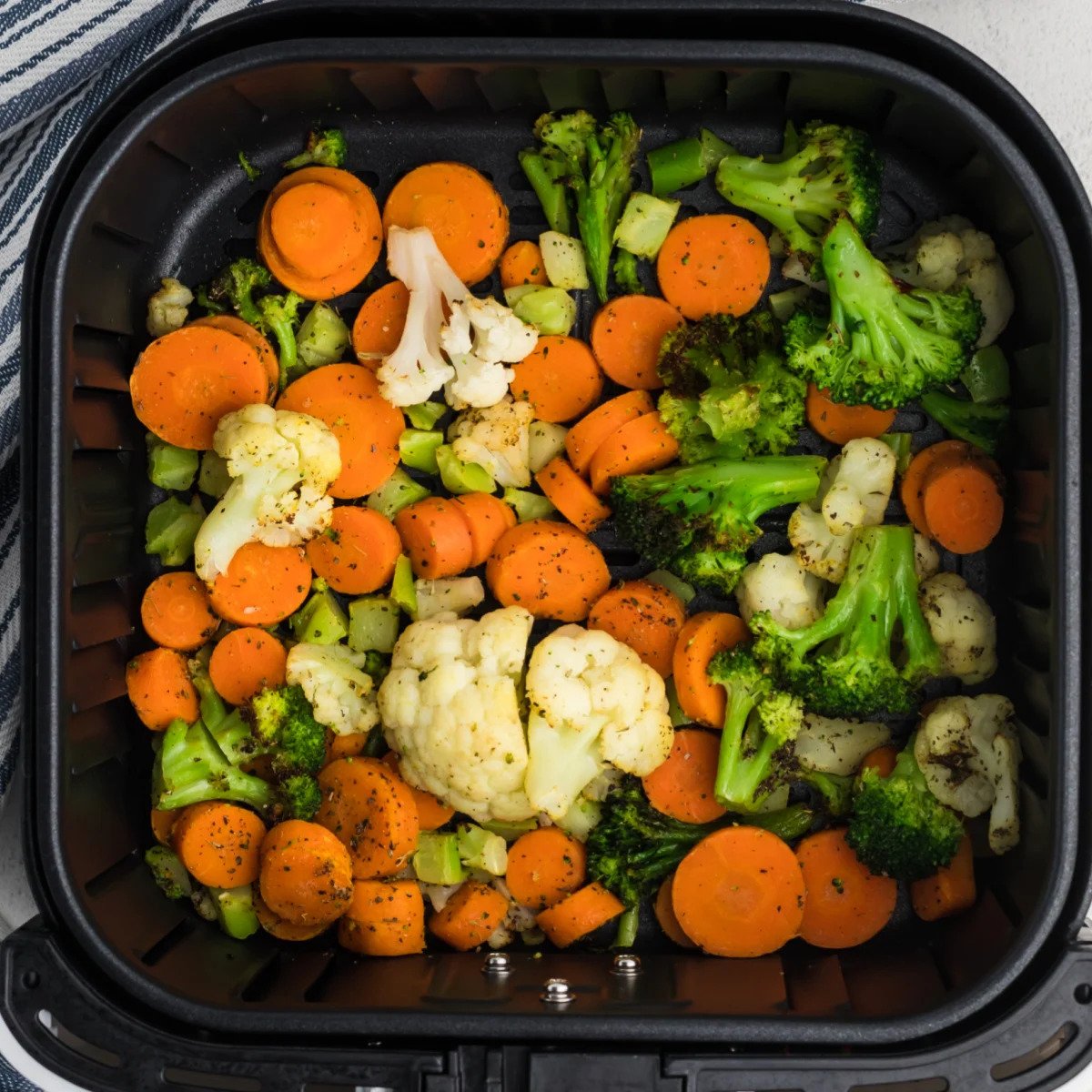

Latest News
How To Cook Frozen Vegetables In Air Fryer
Modified: January 22, 2024
Discover the latest news on how to cook frozen vegetables in an air fryer. Easy, delicious, and time-saving recipes for healthy meals.
(Many of the links in this article redirect to a specific reviewed product. Your purchase of these products through affiliate links helps to generate commission for Chicagolandgardening.com, at no extra cost. Learn more)
Table of Contents
- Introduction
- Benefits of Using an Air Fryer
- Preparing the Air Fryer for Cooking
- Tips for Cooking Frozen Vegetables in an Air Fryer
- Step-by-step Instructions for Cooking Frozen Vegetables in an Air Fryer
- Recommended Cooking Times for Different Vegetables
- Seasoning and Flavoring Options for Air-Fried Frozen Vegetables
- Serving and Enjoying Your Air-Fried Frozen Vegetables
- Cleaning and Maintaining Your Air Fryer
- Conclusion
Introduction
Welcome to the world of air frying, where you can enjoy delicious and healthy meals with the added convenience of quick and easy cooking. One particular dish that you can prepare effortlessly in an air fryer is frozen vegetables. Whether you’re a busy parent looking for a nutritious side dish or a health-conscious individual seeking a hassle-free cooking method, learning how to cook frozen vegetables in an air fryer is a game-changer.
An air fryer is a countertop appliance that uses hot air to cook food, resulting in crispy and evenly cooked dishes without the need for excessive oil. It’s a versatile kitchen gadget that can handle a wide range of foods, from meat and seafood to snacks and desserts. But what sets it apart for cooking frozen vegetables is its ability to retain the natural flavors and textures of the vegetables while achieving a desirable crispness.
There are several reasons why utilizing an air fryer for cooking frozen vegetables is a smart choice. Firstly, it saves you time by significantly reducing the cooking duration compared to traditional methods such as boiling or steaming. With an air fryer, you can have perfectly cooked vegetables in just a matter of minutes, making it an ideal option for those busy weeknight dinners when time is of the essence.
Secondly, using an air fryer to cook frozen vegetables requires minimal effort. Simply place the vegetables in the air fryer basket, set the temperature and cooking time, and let the appliance do the work. There’s no need to defrost the vegetables beforehand or stand over a hot stove, constantly stirring and monitoring the cooking process. The convenience and simplicity of air-frying frozen vegetables make it a popular choice for those who want a no-fuss cooking experience.
Furthermore, air frying frozen vegetables can result in a deliciously crispy texture that is often difficult to achieve with other cooking methods. The hot air circulation in the air fryer creates a gentle heat that removes excess moisture from the vegetables, resulting in a satisfying crunch. This makes air-fried frozen vegetables a hit with both kids and adults, providing an enjoyable way to incorporate more vegetables into your diet.
Now that you understand the benefits of using an air fryer to cook frozen vegetables, it’s time to dive into the specifics. In the following sections, we will explore how to prepare your air fryer for cooking, provide tips for cooking frozen vegetables, and offer step-by-step instructions for perfectly air-frying various types of vegetables. Get ready to elevate your vegetable game with the magic of air frying!
Benefits of Using an Air Fryer
When it comes to cooking frozen vegetables, using an air fryer offers a multitude of benefits that make it an attractive option for individuals looking to prepare quick, hassle-free, and delicious meals. Let’s explore some of the key advantages of using an air fryer:
1. Healthier Cooking Option: One of the main benefits of air frying is that it uses significantly less oil compared to traditional frying methods. By relying on hot air circulation, the air fryer can achieve a crispy texture without the need for excessive oil. This means you can enjoy your favorite vegetables without the guilt of consuming excess fat and calories.
2. Time and Energy Efficiency: Air fryers are designed to cook food quickly. Unlike traditional frying methods that require preheating and longer cooking times, an air fryer heats up in seconds, allowing you to start cooking right away. The hot air circulation cooks the vegetables evenly, and you can have your meal ready in a fraction of the time. Additionally, air frying does not require constant stirring or monitoring, allowing you to multitask and save valuable time.
3. Versatility: Air fryers are not only suitable for cooking frozen vegetables, but they can also handle a wide variety of foods. Whether you want to crisp up some chicken wings, bake sweet potato fries, or even make a batch of homemade donuts, the air fryer can do it all. Its versatility makes it a valuable kitchen appliance that can cater to different culinary preferences.
4. Easy Cleanup: Cleaning up after cooking can be a daunting task, especially when it involves greasy pans and pots. With an air fryer, cleanup becomes a breeze. Most air fryer baskets are dishwasher safe, which means you can simply place them in the dishwasher for effortless cleaning. Even if you prefer handwashing, the non-stick coating of the basket makes it easy to wipe clean with minimal effort.
5. Retained Nutrients and Taste: Air frying vegetables helps retain their natural nutrients and flavors. Traditional frying methods can cause loss of nutrients due to high temperatures, but air frying ensures that the vegetables are cooked quickly and evenly, preserving their nutritional value. Additionally, the hot air circulation in the air fryer enhances the natural flavors of the vegetables, resulting in tasty and flavorful dishes.
6. Space and Energy Savings: Air fryers are compact appliances that take up minimal counter space. They are an excellent alternative to using a large oven or stovetop, especially for smaller kitchens or when cooking for one or two people. Furthermore, air fryers are energy-efficient since they heat up quickly and require less cook time compared to traditional ovens, helping to reduce your energy consumption and lower your utility bills.
As you can see, the benefits of using an air fryer for cooking frozen vegetables are abundant. From healthier meals and time efficiency to versatility and easy cleanup, an air fryer is a valuable addition to any kitchen. In the next sections, we will delve into the necessary steps for preparing your air fryer, provide useful tips for cooking frozen vegetables, and guide you through the process of air frying different types of vegetables to perfection.
Preparing the Air Fryer for Cooking
Before you dive into cooking your frozen vegetables in an air fryer, it’s essential to ensure that your appliance is prepped and ready for the task. Here are the steps to properly prepare your air fryer for cooking:
1. Read the Instruction Manual: Start by reading the instruction manual that comes with your air fryer. Each model may have specific guidelines and features that you need to be aware of. Familiarize yourself with the functions, temperature settings, and recommended cooking times to get the best results.
2. Clean the Air Fryer: It’s important to clean the air fryer thoroughly before using it for the first time. Remove any packaging material and wash the removable parts such as the basket and tray with warm soapy water. Wipe down the interior and exterior of the air fryer with a damp cloth to remove any dust or residue.
3. Preheat the Air Fryer: Preheating the air fryer is crucial for optimal cooking results. Depending on the model, preheating typically involves running the air fryer at the desired temperature for a few minutes without any food inside. This process ensures that the air fryer reaches the desired cooking temperature and helps achieve crispy and evenly cooked vegetables.
4. Adjust the Temperature and Time: Different vegetables require specific temperature and time settings to ensure they cook properly. Refer to the recommended cooking temperatures and times for frozen vegetables in the air fryer’s instruction manual or online resources. Adjust the temperature and time accordingly depending on the vegetables you plan to cook.
5. Apply Cooking Spray: For added crispness, you can lightly spray the vegetables with cooking spray before air frying. The cooking spray will help promote browning and prevent the vegetables from sticking to the basket. Be sure to use a cooking spray that is safe for use in air fryers and follow the instructions on the can.
6. Arrange the Vegetables: Place the frozen vegetables in a single layer in the air fryer basket. Avoid overcrowding the basket as this can prevent proper air circulation and result in uneven cooking. If you have a large quantity of vegetables, cook them in batches, ensuring there is enough space for the hot air to circulate around each piece.
7. Shake or Flip During Cooking: To ensure even cooking and achieve a crispy texture, shake the basket or flip the vegetables halfway through the cooking process. This will help expose all sides of the vegetables to the hot air and promote even browning.
8. Monitor the Cooking Process: Keep an eye on the vegetables as they cook to prevent overcooking or burning. Depending on the model and the specific vegetables, cooking times may vary. It’s a good practice to check on the vegetables a few minutes before the recommended cooking time is up, adjusting the time if needed.
By following these steps, you’ll have your air fryer ready to cook frozen vegetables to perfection. With the preparation complete, it’s time to move on to the next section, where we’ll provide you with tips to ensure successful cooking and share step-by-step instructions for cooking frozen vegetables in an air fryer!
Tips for Cooking Frozen Vegetables in an Air Fryer
While cooking frozen vegetables in an air fryer is a relatively straightforward process, there are a few tips and tricks you can follow to ensure optimal results. These tips will help you achieve perfectly cooked and flavorful vegetables every time:
1. Preheat the Air Fryer: Preheating the air fryer is crucial for achieving crispy and evenly cooked vegetables. Make sure to preheat the air fryer for a few minutes before adding the frozen vegetables to ensure they cook properly.
2. Avoid Overcrowding: Ensure that the frozen vegetables are arranged in a single layer in the air fryer basket, with enough space between each piece. Overcrowding the basket can hinder proper air circulation, resulting in uneven cooking. If you have a large quantity of vegetables, cook them in batches.
3. Shake or Flip the Vegetables: Halfway through the cooking process, shake the air fryer basket or flip the vegetables with tongs to ensure even cooking and browning. This will help expose all sides of the vegetables to the hot air, resulting in a crispy texture on all sides.
4. Adjust Cooking Time and Temperature: The recommended cooking times and temperatures may vary depending on the type and size of the frozen vegetables. Keep an eye on the vegetables and adjust the cooking time or temperature if needed. It’s better to slightly undercook them than to overcook and end up with mushy vegetables.
5. Season and Flavor: While frozen vegetables can be delicious on their own, you can enhance their flavor by adding seasonings and spices. Consider options like garlic powder, onion powder, paprika, or a sprinkle of your favorite herbs. Experiment with different flavors to create a unique taste that suits your preference.
6. Be mindful of smaller vegetables: Smaller vegetables, like peas or corn, may cook faster than larger ones. Keep an eye on them and adjust the cooking time accordingly to prevent them from becoming too soft or overcooked.
7. Don’t be afraid to experiment: The air fryer allows for versatility in cooking, so don’t be afraid to experiment with different vegetable combinations or even mix in some other ingredients like diced onions or bell peppers. This can add more variety and flavor to your dish.
8. Use a timer: Set a timer to ensure that you don’t forget about the vegetables while they’re cooking. It’s easy to get distracted, and overcooking can lead to a loss of texture and flavor.
By following these tips, you’ll be well on your way to cooking delicious and perfectly air-fried frozen vegetables. In the next section, we’ll provide you with step-by-step instructions to guide you through the process of cooking various types of frozen vegetables in an air fryer. Get ready to enjoy flavorful and crispy vegetables!
Step-by-step Instructions for Cooking Frozen Vegetables in an Air Fryer
Now that you’re equipped with some helpful tips, it’s time to dive into the step-by-step process of cooking frozen vegetables in an air fryer. Follow these instructions to achieve perfectly cooked and flavorful vegetables:
- Preheat the air fryer: Start by preheating your air fryer to the recommended temperature. This step ensures that the air fryer is fully heated and ready to cook the vegetables.
- Prepare the vegetables: While most frozen vegetables do not require defrosting, it’s important to remove any ice crystals. Give the vegetables a quick rinse under cold water to remove any ice, and pat them dry with a paper towel.
- Season the vegetables: If desired, season the vegetables with your choice of seasonings. Sprinkle them with salt, pepper, or other herbs and spices to add flavor. You can also drizzle a small amount of olive oil or melted butter for a touch of richness.
- Arrange the vegetables in the air fryer: Place the vegetables in a single layer in the air fryer basket. Avoid overcrowding to ensure proper airflow and even cooking. If necessary, cook the vegetables in multiple batches.
- Cook the vegetables: Set the air fryer to the recommended temperature and cooking time for the specific type of vegetable you’re cooking. Start with the recommended time and adjust as needed based on your preference for doneness and the size of the vegetables. Remember to shake or flip the vegetables halfway through the cooking process to promote even browning.
- Check for doneness: Towards the end of the cooking time, check the vegetables for doneness. They should be tender and have a slightly crispy exterior. If needed, cook them for an additional few minutes until they reach the desired level of doneness.
- Plate and serve: Once the vegetables are cooked to perfection, carefully remove them from the air fryer basket and transfer them to a serving dish. Serve them immediately while they’re still hot and enjoy!
Remember, these instructions serve as a general guide, and cooking times may vary based on your specific air fryer model and the type of frozen vegetables you’re using. Always refer to the recommended cooking times and temperatures provided in the instruction manual or the packaging of the frozen vegetables.
Now that you’re familiar with the step-by-step process, it’s time to explore the recommended cooking times for different types of vegetables and discover various seasoning and flavoring options for your air-fried frozen vegetables.
Recommended Cooking Times for Different Vegetables
When it comes to cooking frozen vegetables in an air fryer, different vegetables may require varying cooking times to ensure that they’re perfectly cooked while retaining their texture and flavor. Here are some recommended cooking times for popular vegetables:
- Broccoli: Preheat the air fryer to 375°F (190°C) and cook frozen broccoli florets for 8-10 minutes, shaking the basket halfway through. Adjust the cooking time depending on the desired level of tenderness.
- Cauliflower: Air fry frozen cauliflower florets at 375°F (190°C) for 10-12 minutes, shaking the basket once or twice during cooking. The cauliflower should be golden brown and tender when done.
- Carrots: Cut frozen carrot sticks into smaller pieces for even cooking. Cook at 375°F (190°C) for approximately 12-15 minutes, shaking the basket occasionally. Check for desired tenderness before serving.
- Green Beans: Air fry frozen green beans at 375°F (190°C) for 8-10 minutes, shaking the basket halfway through to ensure even browning. Adjust the cooking time based on your preference for crispness.
- Corn: Cook frozen corn kernels at 375°F (190°C) for 10-12 minutes, stirring or shaking the basket occasionally. The corn should be heated through and slightly caramelized.
- Peas: Air fry frozen peas at 375°F (190°C) for 6-8 minutes, stirring them once or twice during cooking. Be careful not to overcook, as peas have a quicker cooking time compared to other vegetables.
- Brussels Sprouts: Cut frozen Brussels sprouts in half for even cooking. Air fry at 400°F (200°C) for 12-15 minutes, shaking the basket once or twice during cooking. The Brussels sprouts should be nicely browned and tender.
It’s important to note that these are general guidelines, and cooking times may vary depending on the size of the frozen vegetables and the specific air fryer model you are using. Always check for doneness and adjust the cooking time as needed to achieve your desired level of tenderness and crispness.
Feel free to experiment with different combinations of vegetables and adjust the cooking times to create unique flavor profiles. You can also mix in some herbs, spices, or grated cheese at the end of the cooking process to add an extra burst of flavor to your air-fried vegetables!
Now that we’ve covered the recommended cooking times, let’s explore some seasoning and flavoring options to elevate the taste of your air-fried frozen vegetables.
Seasoning and Flavoring Options for Air-Fried Frozen Vegetables
Cooking frozen vegetables in an air fryer doesn’t mean sacrificing flavor. In fact, air-frying can help enhance the natural flavors of the vegetables while providing a deliciously crispy texture. Here are some seasoning and flavoring options to consider for your air-fried frozen vegetables:
- Classic Seasonings: Keep it simple by seasoning your vegetables with salt, pepper, and a drizzle of olive oil. These basic seasonings enhance the natural flavors of the vegetables without overpowering them.
- Garlic and Herb Blend: Create a flavorful coating by combining minced garlic, dried herbs like rosemary, thyme, and oregano, along with a sprinkle of salt and pepper. Toss the frozen vegetables in this blend before air frying for a savory and aromatic result.
- Spicy Cajun Seasoning: Add some heat and complexity by coating the vegetables with a spicy Cajun seasoning blend. This blend typically includes paprika, cayenne pepper, garlic powder, onion powder, and a touch of dried herbs. Adjust the amount of Cajun seasoning based on your desired level of spiciness.
- Lemon Garlic Zest: For a refreshing and zesty twist, mix grated lemon zest, minced garlic, salt, and pepper. Toss the frozen vegetables in this mixture before air frying to infuse them with vibrant flavors.
- Teriyaki Glaze: Brush the vegetables with a homemade or store-bought teriyaki glaze for a sweet and savory taste. The glaze adds a delicious caramelization and a glossy finish to the vegetables as they cook in the air fryer.
- Parmesan and Herb Topping: Sprinkle grated Parmesan cheese and a medley of dried herbs over the vegetables before air frying. The cheese creates a delicate crust, while the herbs add a burst of aromatic flavor.
- Balsamic Reduction: Drizzle the cooked vegetables with a balsamic reduction just before serving. This tangy and slightly sweet syrup adds a delightful complexity to the dish, making it a mouthwatering accompaniment to your meal.
Don’t be afraid to get creative and experiment with different seasonings and flavor combinations. You can also try incorporating ingredients like diced onions, bell peppers, or even bacon bits to add more depth and variety to your air-fried frozen vegetables.
Remember to taste and adjust the seasonings as needed. Everyone’s palate is different, so feel free to customize the flavors to suit your preferences. With the right seasonings and flavorings, you can transform simple frozen vegetables into a delicious and satisfying side dish or even a main course!
Now that you have plenty of ideas for seasoning and flavoring your air-fried frozen vegetables, let’s move on to the next section, where we’ll explore serving suggestions and tips on how to enjoy your flavorful creations.
Serving and Enjoying Your Air-Fried Frozen Vegetables
Now that you’ve successfully air-fried your frozen vegetables with tasty seasonings and flavors, it’s time to serve and enjoy your delicious creations. Here are some tips and ideas on how to make the most of your air-fried frozen vegetables:
1. Serve as a Side Dish: Air-fried frozen vegetables make a fantastic side dish for a variety of meals. Pair them with grilled chicken, fish, or steak for a well-rounded and nutritious dinner. They also complement pasta dishes, rice bowls, or roasted meats beautifully.
2. Create a Veggie Bowl: Build a nourishing and filling veggie bowl by adding a bed of cooked quinoa, brown rice, or mixed greens. Top it with your air-fried frozen vegetables, along with some protein such as grilled tofu or chickpeas. Drizzle with your favorite dressing for a complete and satisfying meal.
3. Incorporate in Wraps or Sandwiches: Add a flavorful crunch to your wraps or sandwiches by including a generous portion of air-fried frozen vegetables as a filling. They provide a burst of freshness and add an extra layer of texture to your handheld meal.
4. Enjoy as a Snack: Air-fried frozen vegetables can be a delicious and healthier alternative to traditional snacks. Serve them as crispy finger foods with a side of dipping sauce like hummus, ranch dressing, or spicy Sriracha mayo. They’re perfect for game nights, movie marathons, or anytime you’re craving a guilt-free snack.
5. Add to Soups or Stews: Enhance the flavor and nutritional value of your soups or stews by adding air-fried frozen vegetables. They can provide a delightful contrast in texture and a boost of vibrant color to your warming bowls of goodness.
6. Experiment with Toppings: Elevate the presentation and taste of your air-fried frozen vegetables with additional toppings. Sprinkle some toasted sesame seeds, chopped fresh herbs like parsley or cilantro, or even a squeeze of lemon or lime juice to brighten up the flavors.
7. Customize to Your Preference: Feel free to customize your air-fried frozen vegetables based on your taste preferences. If you enjoy extra spice, sprinkle some chili flakes or add a dash of hot sauce. For added richness, drizzle with melted butter or a dollop of sour cream or Greek yogurt.
Remember to serve your air-fried frozen vegetables immediately to enjoy them at their best. They are usually at their crispiest right out of the air fryer, so savor them while they’re still warm. If you have leftovers, store them in an airtight container in the refrigerator and consume within a few days.
Now that you have plenty of serving ideas, it’s time to clean and maintain your air fryer to ensure its longevity and optimal performance.
Cleaning and Maintaining Your Air Fryer
Properly cleaning and maintaining your air fryer is essential not only for hygiene but also for ensuring its longevity and optimal performance. Here are some tips on how to effectively clean and maintain your air fryer:
1. Unplug and Cool Down: Before cleaning your air fryer, make sure to unplug it from the power source and allow it to cool down completely. This will prevent any risk of electric shock or burns.
2. Wash Removable Parts: Most air fryers have non-stick removable parts such as the basket and tray. Wash these parts with warm soapy water using a soft sponge or cloth. Avoid using abrasive cleaners or abrasive sponges that may damage the non-stick coating.
3. Remove Tough Residue: If you encounter stubborn residue or stuck-on food, soak the removable parts in warm soapy water for a few minutes. Then, use a non-abrasive brush or sponge to gently scrub away the residue. Be careful not to scratch the surface.
4. Clean the Interior and Exterior: Wipe down the interior and exterior surfaces of the air fryer with a damp cloth. For stubborn stains or greasy spots, you can use a mild kitchen cleaner or a mixture of baking soda and water. Ensure that the air fryer is completely dry before using it again.
5. Check the Heating Element: Regularly inspect the heating element of your air fryer for any food or grease buildup. If necessary, gently clean it with a soft brush or cloth. Be cautious and follow the manufacturer’s guidelines to prevent any damage to the heating element.
6. Clean the Air Inlet and Outlet Vents: The air inlet and outlet vents of your air fryer may accumulate dust and debris over time. Use a soft brush or an unused toothbrush to carefully clean these vents. This will help maintain proper airflow and prevent overheating.
7. Store Properly: After cleaning and drying all the parts, store them in a clean and dry place. Make sure the air fryer is completely cool before storing it. Avoid wrapping the cord tightly around the appliance to prevent damage or tangling.
8. Follow Manufacturer’s Instructions: Always refer to the manufacturer’s instructions for specific cleaning and maintenance guidelines. Each air fryer may have unique features and requirements, so it’s essential to follow the recommended procedures.
By regularly cleaning and maintaining your air fryer, you can prolong its lifespan and ensure its continued performance. A clean air fryer not only functions optimally but also helps prevent any unwanted flavors or odors from transferring to your food.
With a clean air fryer, you’re ready to explore new recipes and continue enjoying the convenience and deliciousness of air-fried frozen vegetables and other delectable treats!
Conclusion
Air frying frozen vegetables has become an increasingly popular and convenient way to prepare delicious and healthy meals. With the benefits of time efficiency, healthier cooking, and versatility, an air fryer is a game-changer in the kitchen. By following the step-by-step instructions and incorporating the recommended cooking times, seasonings, and flavorings, you can achieve perfectly cooked and flavorful air-fried frozen vegetables.
Remember to properly prepare your air fryer before cooking, clean and maintain it regularly, and follow the manufacturer’s guidelines to ensure its longevity and optimal performance. By doing so, you can enjoy the convenience and deliciousness of air-frying for years to come.
Whether you serve them as a side dish, incorporate them into other recipes, or enjoy them as a snack, air-fried frozen vegetables offer a tasty and nutritious addition to your meals. With the flexibility to customize flavors and experiment with different seasonings and toppings, your air-fried vegetables can cater to your personal preferences and dietary needs.
So, why settle for less? Embrace the benefits of air frying and elevate your frozen vegetable game. Make the most of your air fryer’s versatility, enjoy the convenience of quick and easy cooking, and savor the deliciousness of crispy and flavorful vegetables. Get ready to transform your meals with the magic of air-fried frozen vegetables!
